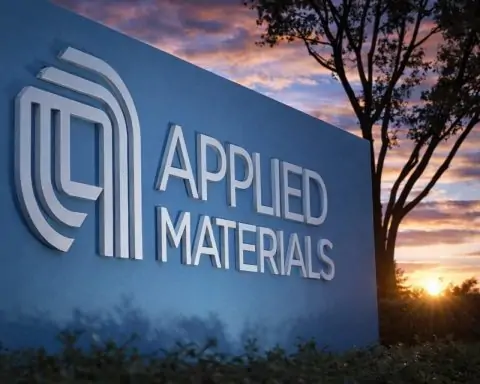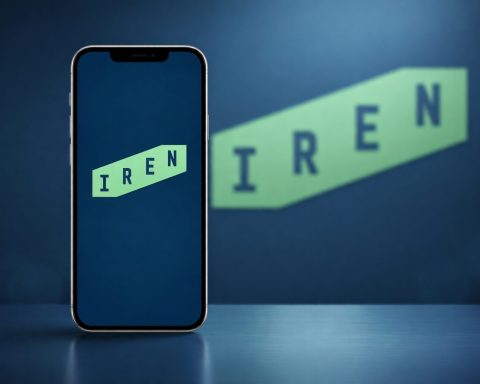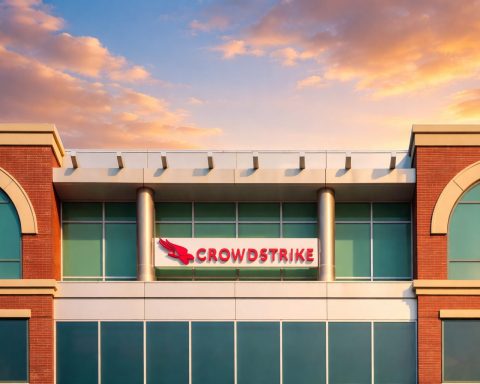Breakthroughs in Quantum Science & Physics
- Single-Atom Logic Gate Slashes Qubit Overhead: Quantum scientists at the University of Sydney demonstrated a new entangling logic gate on a single atom that drastically cuts the number of physical qubits needed per logical qubit. By encoding qubits with the Gottesman–Kitaev–Preskill (GKP) error-correcting code, the team reduced the hardware required for quantum operations [1] [2]. This compact “Rosetta stone” qubit approach, published in Nature Physics, marks a milestone toward scalable quantum computers, showing two logical GKP qubits can be entangled within one trapped Ytterbium ion [3] [4]. Researchers say it’s a foundational step to “large-scale quantum-information processing in a highly hardware-efficient fashion” [5].
- Matter-Wave Interferometry Targets Quantum Gravity: Pushing the boundary between quantum mechanics and gravity, physicists at Ben-Gurion University (Israel) advanced a matter-wave interferometer using levitated nanodiamonds. By precisely controlling the spins of nitrogen-vacancy centers in nanodiamonds, they showed these million-atom particles could be put into superposition just nanometers apart [6]. The work paves the way for experiments probing gravity’s effect on quantum states in unprecedented regimes. The team’s levitated nanodiamond approach – combining optical trapping, spin control, and extreme isolation – offers a promising testbed to explore quantum gravity and even search for dark matter interactions [7].
- Exotic Material Protects Qubits via Magnetism: A collaboration between Chalmers University (Sweden) and Aalto University (Finland) unveiled a quantum material that naturally shields qubits from noise. The new material, described in Physical Review Letters, uses common magnetic interactions to create topologically protected quantum states that resist disturbances [8] [9]. Unlike approaches relying on rare spin-orbit effects, this magnetism-driven method maintained qubit coherence even under external noise – “a completely new type of exotic quantum material that can maintain its quantum properties when exposed to disturbances,” explained lead author Guangze Chen [10]. Such intrinsic error-resilience could hasten fault-tolerant quantum computers by built-in qubit protection [11].
- Sharper Quantum Imaging and Tomography: In quantum optics, researchers in Berlin introduced an algorithm that achieves a doubly-exponential speedup in quantum state tomography. Their new method efficiently reconstructs high-dimensional Gaussian quantum states without being bogged down by the state’s energy or photon count [12] [13]. This energy-independent technique, which uses adaptive heterodyne measurements, means even highly “squeezed” states (with many photons) can be characterized with far fewer measurements than before. The breakthrough promises faster, more scalable quantum state characterization – critical for precision metrology and verifying quantum processors – by keeping sample complexity nearly constant regardless of state energy [14] [15].
Quantum Computing Developments (Hardware & Software)
- Error Mitigation Outguns Raw Qubit Count: IBM researchers reported a striking result in quantum hardware: using a clever error-mitigation technique, a 5-qubit quantum processor outperformed a 156-qubit device on a chemistry problem [16]. They applied “Twirled Readout Error Extinction” (T-REx) to reduce noise in a Variational Quantum Eigensolver algorithm, achieving ground-state energy estimates 10× more accurate than the larger, unmitigated system [17]. This underscores that improving qubit quality (via software fixes) can matter more than sheer quantity. It’s a promising path for near-term quantum computing, suggesting that optimized error correction and parameter tuning can unlock better performance on today’s noisy devices [18] [19].
- Advances in Quantum Communication: On the networking front, scientists developed new techniques to strengthen and speed up quantum communication. One research team devised a protocol (“Piecemaker”) to distribute entanglement across networks with up to 45% higher fidelity by processing entangled pairs immediately instead of waiting to link all nodes [20] [21]. Simulations with 50 qubits showed robust entanglement even with noisy connections, pointing to more reliable quantum internet links. In parallel, a Chinese group demonstrated a test platform to secure quantum key distribution (QKD) over a 70 dB range, detecting potential “Trojan-horse” hacking light across wavelengths 400–2300 nm [22]. This broadband vulnerability analysis will help certify future QKD systems against side-channel attacks, ensuring truly unhackable communications. Together, these advances in entanglement routing and QKD security move quantum networks closer to real-world deployment [23] [24].
Government & Military Quantum Initiatives
- DARPA Launches ‘HARQ’ Program: The U.S. Defense Advanced Research Projects Agency issued a solicitation for a new initiative called Heterogeneous Architectures for Quantum (HARQ). The program seeks “revolutionary advances” in quantum computing, targeting everything from interconnects and transducers to distributed algorithms and error-corrected architectures [25]. HARQ explicitly encourages non-incremental, high-risk research – for example, novel quantum interconnects, modular quantum memory networks, and hybrid quantum-classical compilers – with proposals due by October. By investing in such breakthrough approaches, DARPA aims to accelerate progress toward scalable, secure quantum computers that could serve U.S. national security needs in the long term [26] [27].
- Defense Eyes Quantum AI: In the defense sector, private companies are teaming up to infuse quantum tech into military applications. Notably, Orientom, a quantum technology firm, partnered with Deep In Sight (an AI company) to co-develop quantum-powered AI solutions for military use [28]. The collaboration (announced August 22) will explore quantum algorithms for defense intelligence and logistics, reflecting the armed forces’ growing interest in quantum advantages. Military planners are increasingly funding such joint R&D to harness quantum computing for secure communications, optimization of operations, and advanced simulations that could give a strategic edge. This follows broader trends flagged by defense intelligence – for example, U.S. and allied reports warning that rivals’ rapid progress in quantum sensing and encryption could challenge Western tech dominance [29] [30]. Governments worldwide are responding by launching quantum programs, funding industry partnerships, and even establishing new quantum research hubs to avoid falling behind in what’s viewed as a critical technological race.
Business & Investment Updates in Quantum Tech
- Strangeworks Acquires Quantagonia: In a sign of a maturing industry, Austin-based startup Strangeworks (quantum & HPC software) acquired Germany’s Quantagonia, an AI/optimization firm, to form a “global leader” in applied quantum computing [31]. Announced on August 20, the deal merges Strangeworks’ user-friendly quantum platform with Quantagonia’s hardware-agnostic optimization engine. The combined company – backed by investors like IBM and Hitachi – will offer enterprise clients one-stop solutions for complex problems in scheduling, logistics and decision intelligence using whatever works best (quantum, classical or hybrid methods) [32]. Analysts hailed the move as a milestone for the quantum sector’s consolidation. “Acquisitions that leverage quantum’s performance to solve real-world problems are the next milestone in the maturation of the QC sector,” noted Hyperion Research analyst Bob Sorensen [33], suggesting we’ll see more such strategic mergers as the field grows.
- Transatlantic Partnership in Quantum Labs: In another big move, U.S.-based Entanglement, Inc. and Austria’s Maybell Quantum announced a strategic partnership to accelerate quantum R&D. Under an August 22 Memorandum of Understanding, Entanglement will outfit its global quantum labs – including a new hub in Vienna – with Maybell’s state-of-the-art dilution refrigerators and cryogenic I/O systems [34] [35]. In return, Maybell gains a high-profile customer and collaborator for its ultra-cold hardware. The deal illustrates the growing demand for specialized infrastructure in quantum technology. “Maybell builds the best cryogenic systems for quantum experiments and will power our labs globally,” Entanglement CEO Jason Turner said of the tie-up [36] [37]. Such cross-border alliances are becoming common as companies race to build the supporting ecosystem – from cryogenics to control electronics – needed for advanced quantum computers and sensors.
- IonQ Surpasses 1,000+ Patents: Leading quantum hardware firm IonQ announced that its intellectual property portfolio now exceeds 1,000 total patents and patent applications [38] [39]. This milestone, reached with recent U.S. patent grants, solidifies IonQ’s technical leadership in trapped-ion quantum computing. The new patents include innovations in portable quantum memory for long-distance quantum networks and a self-aligned photonic fabrication process to build 3D optical structures in quantum devices [40] [41]. IonQ’s CEO Nicolo de Masi said the robust IP strategy – covering improved gates, error mitigation, networking and more – positions the company to continue developing “scalable, high-performance, cost effective” quantum systems that accelerate the road to commercial advantage [42] [43]. The patent count also reflects mergers IonQ pursued (e.g. its pending Oxford Ionics acquisition) to absorb key technologies [44] [45]. Investors welcomed the news, as a broad patent moat could give IonQ an edge in the intensifying global race for quantum supremacy.
- Ongoing Funding Flows: Venture capital and government funds kept flowing into quantum startups. For example, Nullspace – a U.S. quantum software startup – raised a $2.5 million seed round to develop tools bridging quantum computing with RF (radio-frequency) engineering [46]. And in Tel Aviv, stealth startup QuamCore emerged with a bold plan for a million-qubit superconducting quantum computer, announcing a $26 million Series A round (plus a government grant) to start building its design [47] [48]. Many experts are skeptical of the “million qubit” claim given today’s largest devices are only in the few-hundred qubit range [49]. Still, such big bets signal investor confidence in ambitious long-term visions. Overall, August saw quantum ventures worldwide attract fresh capital and forge partnerships, from new government-backed innovation centers to corporate venture funds treating quantum as the next strategic pillar alongside AI [50] [51].
Expert Perspectives and Quotes
Despite the rapid progress, leaders in the field balance excitement with realism. Some breakthroughs are still limited in practice – for instance, a recent quantum chemistry experiment drew praise as “an encouraging early step” toward quantum-assisted drug discovery, but experts cautioned it’s not yet outperforming classical methods [52]. This cautious optimism is a common refrain: quantum capabilities are expanding, but classical systems remain formidable benchmarks in most tasks today.
At the same time, industry visionaries underscore the transformative potential of quantum technology. “We see quantum as the next frontier for computation, it’s going to unlock enormous financial benefits,” says Emily Fontaine, head of IBM Ventures, who notes that funding for quantum startups has surged in 2025 [53] [54]. IBM’s strategy now puts quantum on “equal footing” with AI, reflecting a belief that the coming decade will determine the winners of the quantum race [55] [56].
Analysts also observe the quantum sector’s maturation. The recent Strangeworks-Quantagonia deal prompted Hyperion Research’s Bob Sorensen to remark that consolidation aimed at “real-world problems” is the next milestone for the industry [57]. Such expert commentary suggests the quantum landscape in late 2025 is marked by both excitement at breakthroughs and sobriety about the work still ahead. The consensus: Quantum tech is advancing on multiple fronts – from fundamental science to commercialization – but realizing its full promise will require sustained innovation, investment, and perhaps a few more “quantum leaps” in the years to come.
Sources: Primary news sources and press releases from Aug 22–23, 2025 (ScienceDaily, Quantum Zeitgeist, The Quantum Insider, TS2 Technology News) have been cited throughout the report for verification of each development [58] [59] [60] [61].
References
1. quantumzeitgeist.com, 2. quantumzeitgeist.com, 3. www.sydney.edu.au, 4. www.sydney.edu.au, 5. www.sydney.edu.au, 6. quantumzeitgeist.com, 7. quantumzeitgeist.com, 8. ts2.tech, 9. ts2.tech, 10. ts2.tech, 11. ts2.tech, 12. quantumzeitgeist.com, 13. quantumzeitgeist.com, 14. quantumzeitgeist.com, 15. quantumzeitgeist.com, 16. quantumzeitgeist.com, 17. quantumzeitgeist.com, 18. quantumzeitgeist.com, 19. quantumzeitgeist.com, 20. ts2.tech, 21. ts2.tech, 22. quantumzeitgeist.com, 23. ts2.tech, 24. quantumzeitgeist.com, 25. www.highergov.com, 26. www.highergov.com, 27. www.highergov.com, 28. ts2.tech, 29. thequantuminsider.com, 30. thequantuminsider.com, 31. ts2.tech, 32. ts2.tech, 33. ts2.tech, 34. thequantuminsider.com, 35. thequantuminsider.com, 36. ts2.tech, 37. ts2.tech, 38. investors.ionq.com, 39. investors.ionq.com, 40. investors.ionq.com, 41. investors.ionq.com, 42. investors.ionq.com, 43. investors.ionq.com, 44. investors.ionq.com, 45. investors.ionq.com, 46. ts2.tech, 47. ts2.tech, 48. ts2.tech, 49. ts2.tech, 50. thequantuminsider.com, 51. thequantuminsider.com, 52. ts2.tech, 53. ts2.tech, 54. ts2.tech, 55. thequantuminsider.com, 56. thequantuminsider.com, 57. ts2.tech, 58. quantumzeitgeist.com, 59. ts2.tech, 60. investors.ionq.com, 61. ts2.tech










